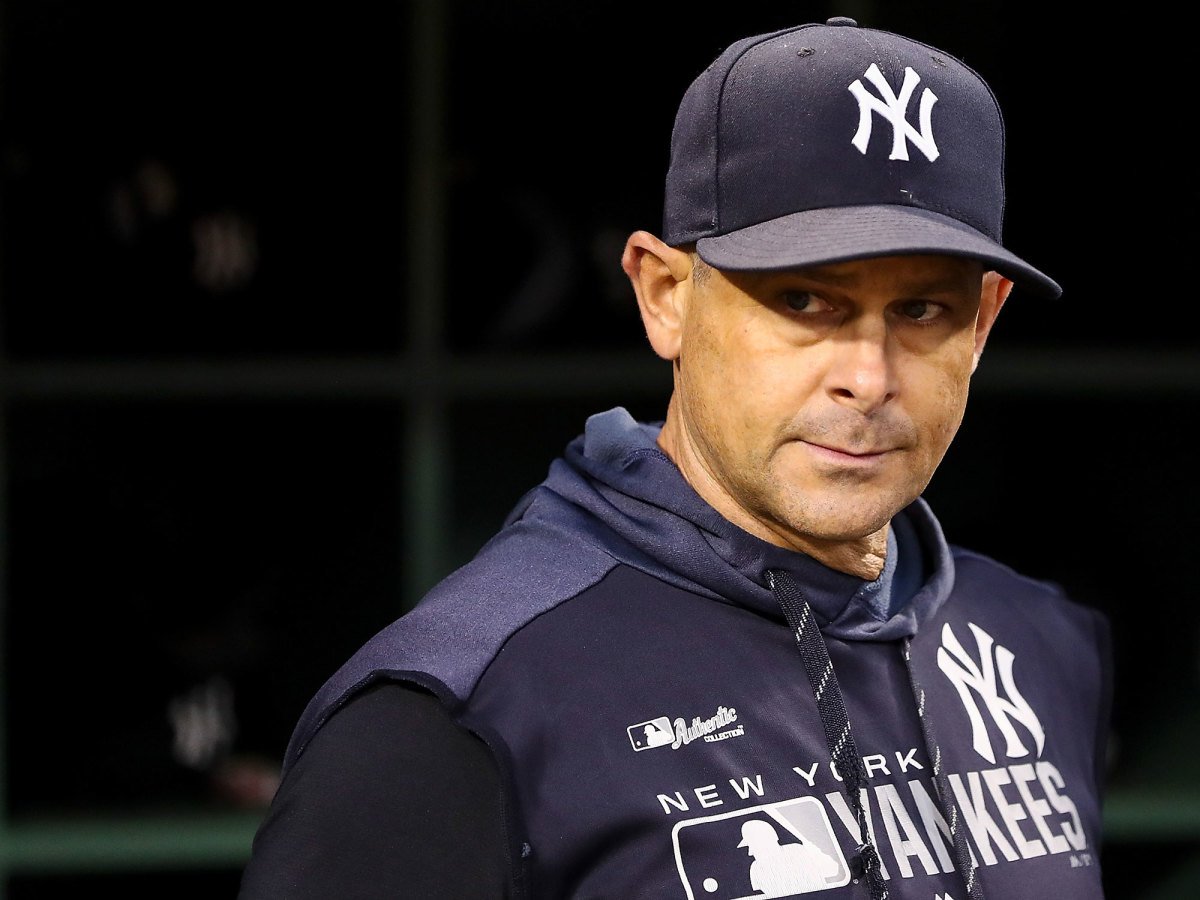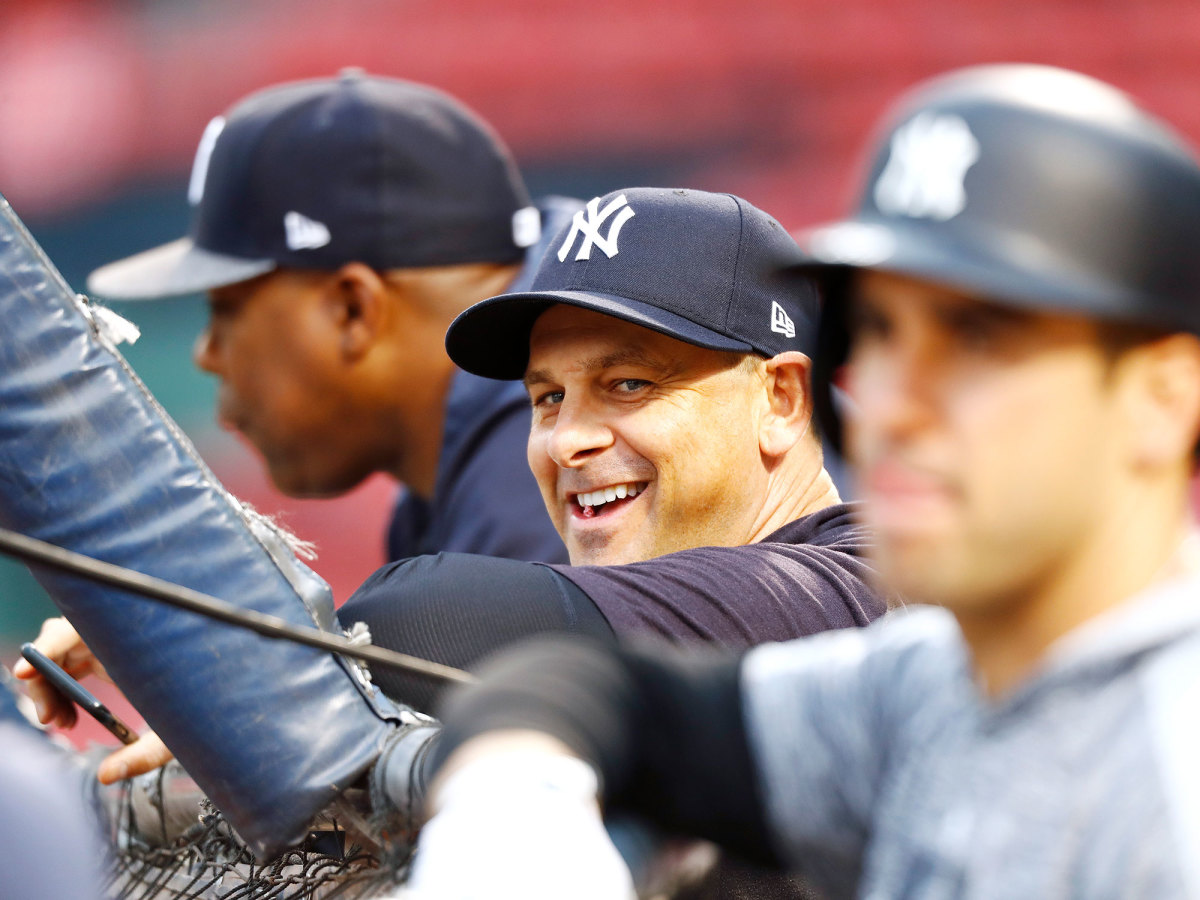The Yankees Will Play by Their Own Pitching Rules in October

Are you old enough to remember when the Yankees invited criticism for not trading for a starting pitcher at the trade deadline? Oh, right. That was only two months ago. Since then the Yankees are 30-14, and are going full steam into the postseason with a pitching script that fits the modern game, not your fossilized narrative of what wins in October.
“We’re going to be a little untraditional,” manager Aaron Boone said. “The only one we might use as a traditional starter is [James] Paxton.”
By traditional, Boone means a starting pitcher who goes as deep as he can into a game. Otherwise, New York is prepared to script each game with piggyback starters and six key relievers. That doesn’t make the Yankees vulnerable. It makes them smart.
Traditional starters always will be the preferred model in the postseason. The Astros and Nationals will try to win the traditional way. But because bullpens are so deep and because lineups are so powerful, most teams don’t have enough starters to play that game. Now postseasons are decided not by starters “pitching deep into games” but by how a team decides to deploy pitchers in “untraditional” ways–rovers, openers, third-time around pitching changes, etc.
(“Team” is used here, not just “manager,” because front office executives and analytic departments help the manager script pitcher usage before a game. Managers still must make on-the-fly calls in the heat of competition, but decision trees are set beforehand.)

Wait, you say. Didn’t the Red Sox ride veteran, expensive starting pitchers to the World Series title just last year? Yes and no.
Do you know how many times Boston starters pitched three complete times through a lineup last postseason?
Zero.
The Red Sox played 14 postseason games. They became the first team to win the World Series without a starter facing 27 batters the entire postseason. Look how much the “pitching deep into games” narrative has died since the decade opened with the old-school Giants:
Postseason Starts Facing 27+ Batters by World Champion, 2010-18
Year | Team | Starts |
|---|---|---|
2010 | Giants | 10 |
2011 | Cardinals | 3 |
2012 | Giants | 5 |
2013 | Red Sox | 5 |
2014 | Giants | 6 |
2015 | Royals | 2 |
2016 | Cubs | 2 |
2017 | Astros | 2 |
2018 | Red Sox | 0* |
*First such World Series champion
Let’s widen the lens and look at all postseason teams, not just the teams that won it all. What do we find? More proof that “pitching deep into games” is a dying postseason narrative:
Total Postseason Starts Facing 27+ Batters
Year | Starts |
|---|---|
2010 | 27 |
2011 | 20 |
2012 | 24 |
2013 | 17 |
2014 | 18 |
2015 | 18 |
2016 | 9 |
2017 | 4 |
2018 | 4 |
Look at those last two lines. There have been 142 starts made in the postseason the past two years. Only in eight of them did the pitcher face 27 or more batters–and half of them were made by Houston starters (three by Justin Verlander, one by Gerrit Cole).
That’s only 6% of all playoff starts. Go back 10 years (2007-08) and the rate was 29 percent. Go back 20 years (1997-98) and the rate was 45 percent.
This year starters are facing a batter a third time less than any time in the history of baseball. When they do, they allow the highest third-time-around slugging percentage of all time (.471).
In that vein, Boone is in a bind when it comes to his starters providing "length." Yankees opponents have an MLB-best .920 OPS against New York starters when facing them for a third time in a game.
The Yankees have five of the 19 worst starters in the league when facing a lineup the third time around. How often do you think Boone will let any of these guys–even Paxton–go through a lineup a third time? Look how many batters he allowed his starters to face last postseason:
1. Luis Severino: 19 batters. Left up 2-0. First time in postseason history a pitcher throwing shutout baseball with seven strikeouts was pulled so quickly (four innings).
2. J.A. Happ: 11. Down 3-0.
3. Masahiro Tanaka: 19. Up 3-1.
4. Luis Severino: 18. Down 3-0.
5. CC Sabathia: 17. Down 3-0.
The Yankees have played 21 straight postseason games without a starter facing 27 batters (Hiroki Kuroda in 2012). It’s not happening now.

Let’s imagine what Boone might do with his rotation in the ALDS. Here’s one scenario:
Game 1: Paxton. He’s won his past nine starts, primarily because he stopped throwing about 85 percent fastballs. Since his streak began, he virtually doubled his curveball use, from 14 percent to 27 percent.
But in this 9-0 run Paxton has faced 27 batters only once. A reminder: hitters post a .897 OPS when facing the lefty for a third time. There is no way Boone is losing a postseason game by leaving a starter in too long–including Paxton, his one “traditional” starter.
Game 2: Severino and Happ, not necessarily in that order. Severino makes his first start Tuesday. He’s not going to be stretched out enough to be treated as a traditional starter. When I asked Boone if he planned to use Severino first or second in a piggyback situation, he said, “I don’t know. We’ll see.”
Game 3: Sabathia and German. In a preview last week in Detroit, we saw these two pitchers cover 22 outs while allowing two runs. The Yankees like to trust Sabathia on the road. As with Severino and Happ, you flip the lineup with different-sided pitchers.
Game 4: Tanaka and Happ. Boone mentioned that even Tanaka’s role may be as a “floater.” Another right-left tandem.
Game 5: Paxton.
Keep in mind that Boone’s bullpen is so deep and he gets two off days in a five-game series. Sometimes he might not even need the second of the piggyback starters. He could go to his bullpen in the fourth or fifth inning. Dellin Betances has made it back from shoulder trouble and Chad Green has been better over the past two months (.158 average allowed) to make the bullpen even deeper.
How deep is it? The Yankees are 24-0 when Tommy Kahnle, Zack Britton, Adam Ottavino and Aroldis Chapman pitch in the same game. Boone is the only manager this year never to use a reliever three days in a row. And his relievers are so platoon-neutral that Boone doesn’t have to worry much at all about playing match-up:
Yankees Relief Splits, 2019
Pitcher | vs. RHB | vs. LHB |
|---|---|---|
Kahnle | .206 | .194 |
Britton | .196 | .154 |
Ottavino | .169 | .237 |
Chapman | .200 | .152 |
Before the wild-card game last year, when asked about his pitching plans, Boone gave a window into his script when he said, “But obviously with our bullpen and what we’ll have available at our disposal, we’ll also be very aggressive in making moves or trying to set up the best matchups, depending on the game.”
Translation: As long as the game is not one-sided, Boone is not going to ride his starters. What he needs is for his starters to manage the first four or five innings, which is what they failed to do against Boston in the Division Series last year.
But don’t confuse short starts with a losing formula, the way it might have been 20 years ago. As much as we love Sandy Koufax, Bob Gibson, Orel Hershiser, Curt Schilling and Madison Bumgarner, this is a different age. Only a few such horses remain.
Whether it’s Craig Counsell using an opener; Dave Roberts pulling Rich Hill when the lineup turns over a third time; Alex Cora using starters out of the bullpen; Joe Maddon pulling a starter with less than 100 pitches in 29 of 37 Cubs postseason games; or Boone pulling his ace after four shutout innings with seven strikeouts, managers are playing by new rules of engagement.
The worst mistake now for a manager is to take a starter out too late, not too soon. No starting pitcher has lost a postseason game late since Johnny Cueto of the Giants lost to the Cubs, 1-0, on a Javier Baez eighth-inning homer in Game 2 of the 2016 NLDS–that’s 196 consecutive postseason starts.
The game evolves, so must we. Twenty years ago the Yankees might be in trouble with this postseason rotation. Not now, not with this bullpen.
